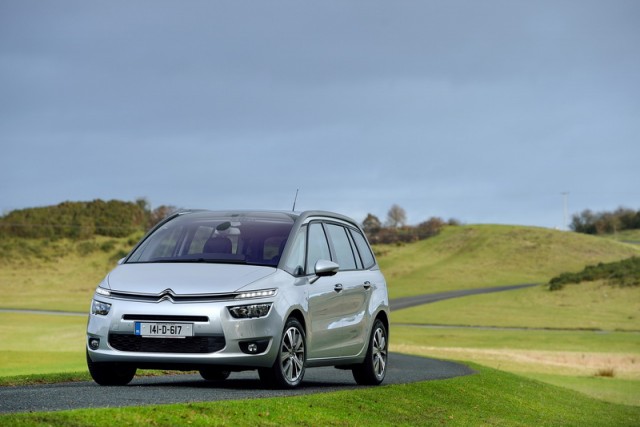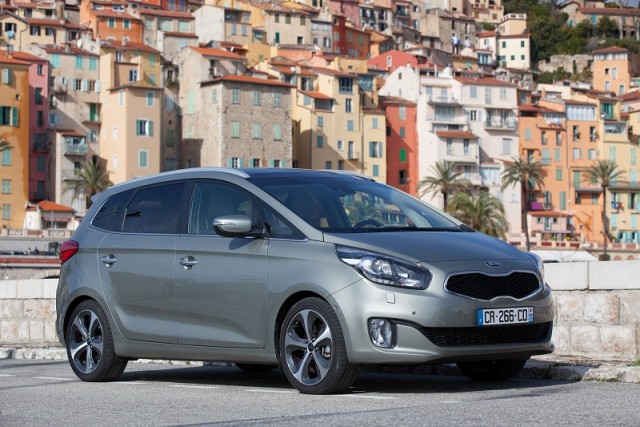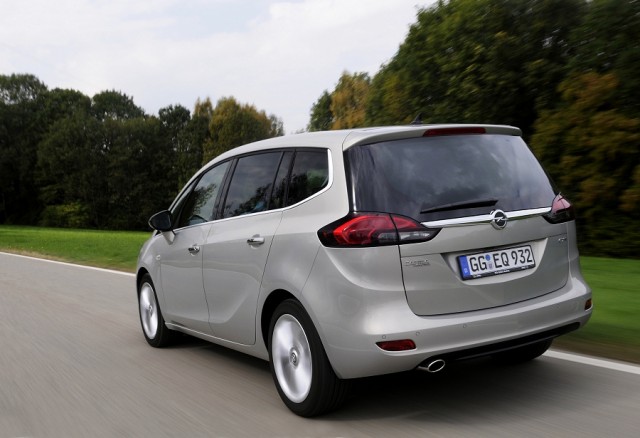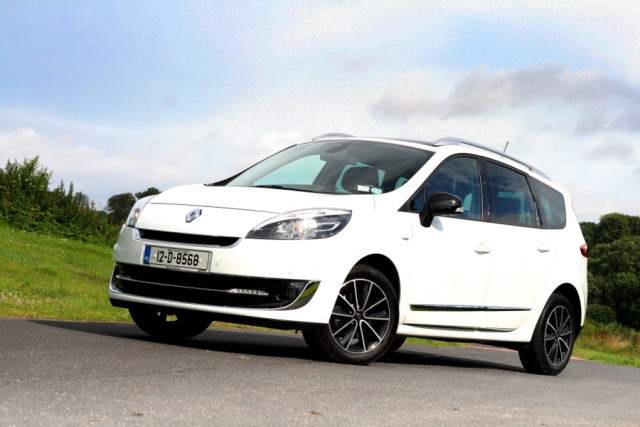Good: extrovert styling, top class interior, drives better than before.
Not so good: some cheaper plastics inside, gear shift position is counterintuitive.
In April of this year Carlos Tavares, CEO of PSA Peugeot Citroen, delivered his 'Back in the Race' recovery plan that he (and everyone else associated with PSA) hopes will see the French conglomerate return to profitability and grow into a proper global company.
At the heart of this recovery plan is the repositioning of PSA's various brands: Citroen's DS name will be spun off to create a premium rival for the Germans; Peugeot is being moved up class to better compete with Volkswagen and Citroen's 'C' line will take care of the mainstream. This is perhaps best signified by the forthcoming C4 Cactus, a clever yet cost effective crossover that should bloody the nose of the recently refreshed Nissan Juke when it arrives here later in the year.
So where exactly does the Citroen Grand C4 Picasso fit into that master plan? As the name would suggest, the Grand Picasso is the big, seven-seat brother of the current Irish Car of the Year, the C4 Picasso, and in the style stakes and interior design and quality it appears closer to Tavares' plan for Peugeot than it does Citroen.
Take the looks: seven-seat MPVs have traditionally been dull and boring. If a car is an appliance then the big MPV is a chest-freezer: big, blocky and sacrificing all notion of styling in favour of practicality. Not the Grand Picasso though. To these eyes it actually looks better than its five-seat brother. The rear end, truncated on the regular Picasso, looks more resolved in the Grand. The overall design, with the split headlights up front, elongated chevron grille, expansive glasshouse and unique rear lights, are a touch love-it-or-hate-it, but at least you will remember the Grand Picasso - not something that can be said of all of its contemporaries.
The Grand Picasso is based on the same extended EMP2 (Efficient Modular Platform) architecture as the Peugeot 308 SW so is 38mm longer than the regular car. The floor is also 20mm lower than in the old Grand and up to 82mm wider, meaning there is an abundance of space inside. With the middle row made up of three individual seats - which can be slid and tilted independently of each other (as well as all featuring Isofix mounting points) - there is more than enough space for five full grown adults. But you don't buy a Grand Picasso to carry just five people, so how are the rearmost seats? A touch on the tight side; this is no SEAT Alhambra or Ford Galaxy rival that can be used as a seven-seater all year round. Think of it more as a 5+2 with occasional seats in the back and you won't be disappointed. Plus, if you keep all seven seats in place all the time there won't be much boot space. As a five seater the Grand offers a reasonable 537-litre boot capacity, but with all seats in place you will struggle to get a couple of carry-on suitcases in.
While acknowledging that our test car was a range topping Exclusive model with €3,300 worth of Champagne leather heated and massaging seats, it is inside that Citroen really takes Tavares plan and throws it in the bin. With light pouring in through the standard fit panoramic windscreen you can truly appreciate the quality of the Grand Picasso's interior. The whole thing is centred around a 12-inch high definition display with a 7.5-inch touchscreen below it. Most of the major secondary controls are housed within the smaller screen, leaving an uncluttered dashboard. The latter is a mixture of curves and angles rather than just a slab of grey plastic and it is only let down by some cheaper quality plastics lower down.
The other black mark in the Grand Picasso's copy book is the gearbox, or actually the shifter for it. The transmission itself is a new six-speed automatic unit that makes its predecessor look about as smooth as walking downstairs with leg callipers on. It really does shift seamlessly - taking full advantage of the 2.0-litre 150hp BlueHDi diesel up front. Unfortunately the shifter is an American style steering wheel column mounted design that looks like an afterthought. It looks unsightly and is counterintuitive to use.
Thankfully it does not detract from the drive too much. Seven-seat MPVs are never going to be great to drive in the enthusiastic sense, but the Citroen engineers have certainly taken a page from the Ford S-Max playbook by remembering to add a touch of interest to the experience. The BlueHDi engine under the snub bonnet pulls well with an ample 370Nm of torque to back up its 150hp output, but the biggest difference between the new generation Grand Picasso and the one that came before is the steering. In the old car you got the feeling that the steering wheel was communicating with the front wheel by way of telegram rather than any physical connection between the two. No such problem with the new car as the flat-bottomed steering wheel has the right amount of weight to it. Body roll too, thanks to the lower centre of gravity, is largely kept in check. The ride can get a bit fidgety at times but we suspect this has more to do with the 17-inch alloy wheels than anything else; possibly best to stick with the standard 16-inch wheels, sacrificing looks for comfort.
The Grand Picasso range kicks off at €26,795, but that's for a car with Citroen's ETG6 automated manual transmission, which is not something we're fans of. Best off stumping up the €27,895 asking price for the VTR manual, as not only do you get a better transmission but it also has 115- rather than 90hp and while the new car is 100kg lighter than before it is still no featherweight. That €27,895 figure puts it right in the mix with the Kia Carens, Renault Grand Scenic and Opel Zafira Tourer, but on merit and for the level of sophistication it offers we would take the Citroen just about every time.









































